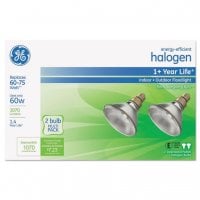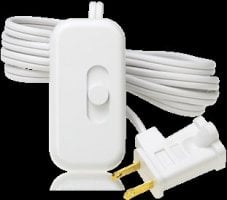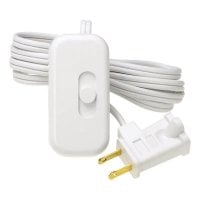What type of bulb makes a good basking bulb? Why do I need one?
A basking bulb is essential for keeping your bearded dragon warm and helping it regulate its body temperature. Basking helps beardies to digest their food and maintain their metabolism and immune system.Experienced bearded dragon owners will frequently tell you that finding a good basking bulb shouldn’t be too difficult. Technically, this is correct because all you need is a white bulb that is not tinted with any color or coated with neodymium.
This bulb can be a basic household bulb, such as an incandescent bulb, or a halogen bulb. Avoid LED bulbs because they do not provide sufficient heat for your beardie’s basking spot.
When using a halogen bulb, we highly recommend using a flood light so there is a more even temperature distribution across your beardie’s basking zone. Here are a couple of examples of halogen bulbs that we believe will work well for your dragon.
Alternatively, you can buy a basking bulb specifically designed for reptiles (avoid those coated with neodymium). Zoo Med is a well known brand for reptile-specific products.
Another basking bulb that has been well-reviewed is made by Fluker’s.
With so many choices, how do I know I picked the right basking bulb?
Most bearded dragon forums are filled with questions about whether or not a particular bulb is ok to use for a bearded dragon. So how do you choose? The main criteria for choosing a basking bulb is whether or not it helps you achieve proper temperatures within the basking zone of your enclosure while still allowing for an appropriate cool side.The best basking bulb for your beardie’s enclosure will be the one that can maintain a basking area surface temperature of 105 F to 110 F for bearded dragon babies, 105 F for juveniles, and 95 F to 102 F for fully grown dragons.
Just be sure to take these temperatures with a reliable temperature gun since your beardie’s health depends on accurate readings! While some temperature fluctuation is expected, we do not recommend exceeding 110 F.
What are the Common Pitfalls when Choosing a Basking Bulb?
Using a narrow beam bulb
One big pitfall that some inexperienced bearded dragon owners fail to realize is that the basking “spot” is not truly a spot. Instead, what you want to achieve is a basking “zone.” Some people buy narrow beam bulbs that produce small areas of intense heat but do not adequately cover the entire basking zone.Be sure to test several areas within the basking zone with your temp gun to make sure that you are maintaining temperatures within the correct range.
A narrow spot lamp that heats only a small section of the beardie’s skin would cause thermoregulation issues for your beardie since its whole body would not be located within the basking zone.
Narrow beam lamps can also cause burns and should be avoided in all circumstances.
Using a bulb marketed as “Daytime” or “Daylight”
When someone asks what basking bulb is recommended for bearded dragons, the answer is frequently “bright white.” Technically, this is not accurate since most halogen bulbs are around 3,000K (measurement of color temperature) and most incandescents are between 2,500K and 2,700K. This puts most recommended basking bulbs into the “soft white” category. “Bright white” has a Kelvin rating of between 4,000K and 5,000K, which we personally, have not found when looking for a basking bulb.However, many bearded dragon owners go in search of these “bright white” basking bulbs and encounter something known as “Daylight” bulbs, “Daytime Heat Lamps” and “Day White Light” bulbs. Most of these bulbs are incandescent bulbs marketed for basking-use, but have been coated with neodymium, which is essentially glass that has been tinted purple to filter out the color yellow. To human eyes, the light that these bulbs produce does indeed look like our idea of “bright white.” However, these bulbs are believed to be harmful to the sensitive eyes of bearded dragons and should be avoided.
Using a Colored Basking Bulb
There are quite a few colored basking bulbs on the market—many of which are marketed for reptile-use. Some even come with pictures of bearded dragons on the packaging suggesting that they have been designed for use with bearded dragons. Some examples of inappropriate and dangerous colored basking bulbs include Zilla’s Day Blue Light and Exo Terra’s Infrared Basking Spot. These may work for other reptile species but need to be avoided with bearded dragons.Non-tinted/coated white bulbs are the only safe choice when it comes to bearded dragons.
Using a high wattage basking bulb without proper distancing/dimming
When using higher wattage basking bulbs, don’t forget that the temperature that your bearded dragon experiences may be somewhat higher than the surface temperature of the basking surface because the beardie itself would be located closer to the light source during a basking session.If your temp gun reads 110 degrees F on the surface of your basking zone (and there is a margin of error), then your bearded dragon could be exposed to temperatures several degrees higher than the recommended maximum of 110 F.
To solve this issue, position your basking light further away from your dragon or use a dimmer switch to control the temperature more precisely.
What fixture do I need for a bearded dragon basking bulb?
We recommend dome-shaped basking bulb fixtures with a ceramic socket (the socket will usually will be white) to reduce the risk of overheating and fire. Please be sure to select a fixture that is rated to handle the wattage of your chosen bulb.Dome fixtures typically come in two standard sizes —5.5 inches (mini dome) and 8.5 inches (deep dome) so be sure to pick one that works for your chosen bulb and available space.
Domes fixtures with a good reflector will ensure that the heat is more evenly distributed across the basking zone. Below, you will find some of our favorite dome fixtures in both the regular and the deep sizes.
Should I use a dimmer for my basking bulbs?
Yes, in general you should be using a dimmer with all dimmable basking bulbs. The more difficult alternative is to test several bulbs with different wattage to determine which one results in the proper temperatures across your beardie’s basking zone.Most incandescent and halogen bulbs are dimmable, which is very convenient when trying to regulate the temperature in the basking zone more precisely.
Please note that some reptile-specific basking bulbs may not be dimmable so be sure to ask the manufacturer if you are planning on using a dimmer switch.
Some dome fixtures actually come equipped with a dimmer switch such as this Fluker’s Clamp Lamp.
Zoo Med also makes a version of their popular dome fixture equipped with a dimmer switch.
Other types of dimmer switches plug directly into your fixture, and the dimmer switch is then plugged into a wall outlet.
Lutron Credenza Plug-In Dimmer for Halogen and Incandescent Bulbs is one example of a plug-in dimmer that you could consider.
Should I use a thermostat to dim my basking bulbs?
If the ambient temperature of your home is not particularly stable, you may benefit from a dimming thermostat. Normally, once you have found the correct temperature range for your beardie’s basking zone, it remains relatively stable (be sure to check semi regularly).However, in certain homes, ambient home temperature can change significantly throughout the day, which could affect the temperatures inside your terrarium. In those situations, a dimming thermostat can give you a lot of peace of mind because the temperature is controlled automatically when the basking bulb is plugged into the dimming thermostat.
Check out this dimming thermostat available on Amazon.
Yet another well known brand that makes a dimming thermostat is Vivarium Electronics—just be sure that the model you’re buying is the Vivarium Electronics Model VE-200D, which has been specifically designed to work with incandescent bulbs.
Nighttime Heating
If your house cools down to below 65 degrees at night, you must use a CHE (ceramic infrared heat emitter) or a deep heat projector.Please do not use other types of nighttime heating bulbs, including red bulbs, moonlight bulbs, etc., because these will disrupt your bearded dragon’s sleep.
A CHE is one good option because it produces heat, but no light.
Here are some ceramic heat emitters for you to consider:
What fixture do I need for a ceramic heat emitter (CHE)?
The same type of dome shaped fixture you use for your basking bulb will work for the CHE. The most important thing to remember is that you must use a fixture with a ceramic socket because CHEs get very hot, and you would be risking a fire if you used a plastic socket that could melt.Another option is the Zoo Med Wire Cage Clamp Lamp that is specifically designed for ceramic heat emitters.
Is there another way to maintain nighttime temperatures besides a CHE?
Yes! Arcadia deep heat projectors produce plenty of heat with no visible light so they will not disrupt a beardie's night-time cycles. Deep heat projectors use ‘Infra-Red-A’ and ‘Infra-Red-B’ rays to heat deep into the muscle of your bearded dragon.Some of our community experts prefer using deep heat projectors instead of CHE because they don't get nearly as hot to the touch and carry a reduced risk of fire. Deep heat projectors can be used with dimming and pulse thermostats. A thermostat allows the deep heat projector to be turned on when the temperature inside the enclosure drops below 65 degrees and turn off when the proper nighttime temperatures are achieved (about 70 F-75 F).
Can’t I just use a heating pad or a heating rock instead of a CHE or a deep heat projector?
Absolutely not! Bearded dragons do not have a way to sense heat directly on their belly. They can only sense radiant heat. Dragons have been known to lay on heatpads and heating rocks as they malfunction, and get very severe burns.The risk is simply not worth it.Can I use a thermostat with my ceramic heat emitter (CHE)?
Yes! For a ceramic heat emitter, the best type of thermostat to use would be pulse proportional.Hagen Exo Terra Electronic Day/Night Thermostat (600 Watt) has a pulse proportional option (in addition to dimming) that can be used with ceramic heat emitters.
Some other good options include:



